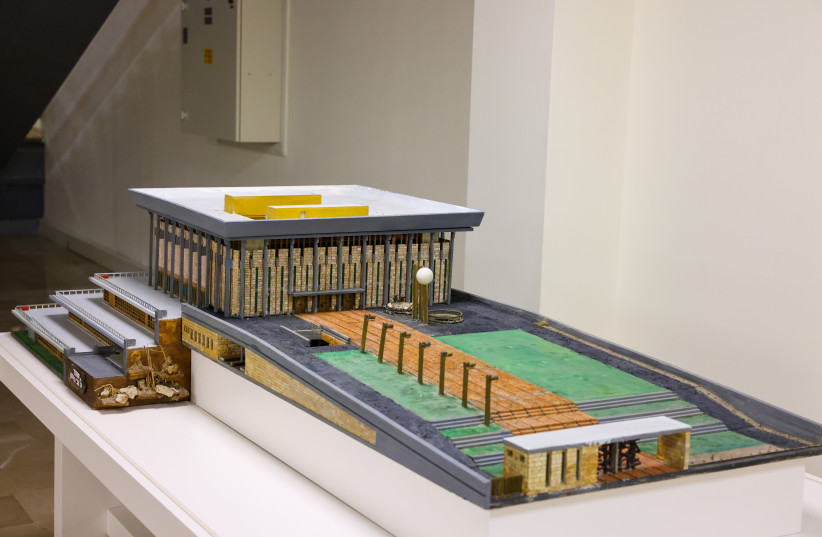In honor of Thursday’s International Holocaust Remembrance Day, the Knesset concluded the complex preservation procedure of a model of the Knesset building that was recently given to the Knesset archives.
Work on the model was begun in the 1970s by Zvi Gosman, a Holocaust survivor whose dream was that the model he worked on for thousands of hours and that became his life’s work be displayed at the Knesset.
Knesset Speaker Mickey Levy said he was moved by the gift given to the parliament by Zvi’s children, Anat and Uri.
“Zvi defeated the Nazis and built a wonderful family in Israel,” Levy said. “The project he worked on for four years of his life will now be displayed in the Knesset and will even be part of a new historical tour given by our visitor’s center. Children and soldiers will learn who Zvi Gosman was.”
The secretary-general of the Knesset at the time wanted to give Gosman, who died 24 years ago, the architectural sketches of the building, but Gosman rejected them, saying he was not an architect and did not understand maps and architectural plans of the building. He measured each window and each door himself, and was given a special permit from then-police minister Shlomo Hillel to go around all the wings of the building in order to replicate it accurately.
Gosman constructed the model – which is more than two meters long and more than a meter wide – using more than 12,000 small pieces of Jerusalem stone, which he cut with his own hands from the rocks of Jerusalem. His hands were occasionally injured during the cutting, but nothing deterred him from the arduous task that required tremendous patience.
At 16, Gosman and his friends from Youth Aliyah were brought to Kibbutz Givat Hashlosha where they completed their education. He was sent to defend Tel Hai and Kfar Giladi, and was one of the founders of Kibbutz Hamadiya.
“Zvi was one of the defenders of Holon before the War of Independence,” said his daughter, Anat Greenwurzel. “He was a member of the Hagana and one of the first IDF soldiers to fight on the ‘Burma Road’ and at Latrun. When the State of Israel was established, he enlisted in the Israel Police. My father was an artist and sculptor at heart, and he created models of historic sites that are landmarks in the country’s history.”
Among his works are models from Jerusalem, the port of Old Jaffa, a model of the ‘Tower and Stockade’ communities, and the port of Acre. A monument to Colonel Marcus commissioned by the Israel Police is on display in a museum in the United States.
Knesset Archives Director Inda Novominsky said that in order to preserve Gosman’s magnum opus, the Knesset examined how to prevent the natural weathering of the model. Alice Dias, a wood preservation expert who worked on the exhibit in recent weeks, was chosen for the task.
“One of [my father’s] most marvelous models and the highlight of his many works is the Knesset,” Greenwurzel said. “It is a remarkably accurate model, a very special model due to the importance of this institution to the State of Israel.”

